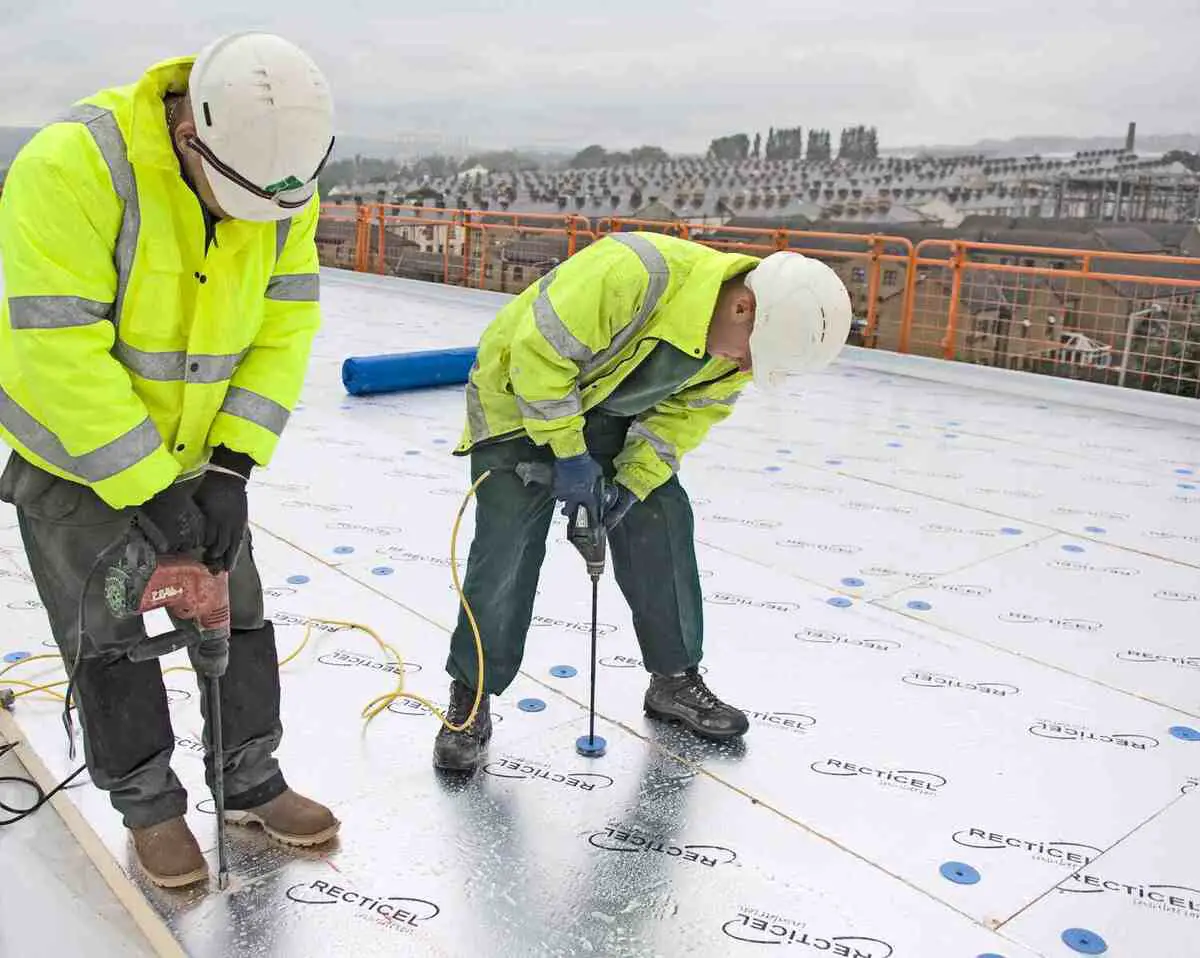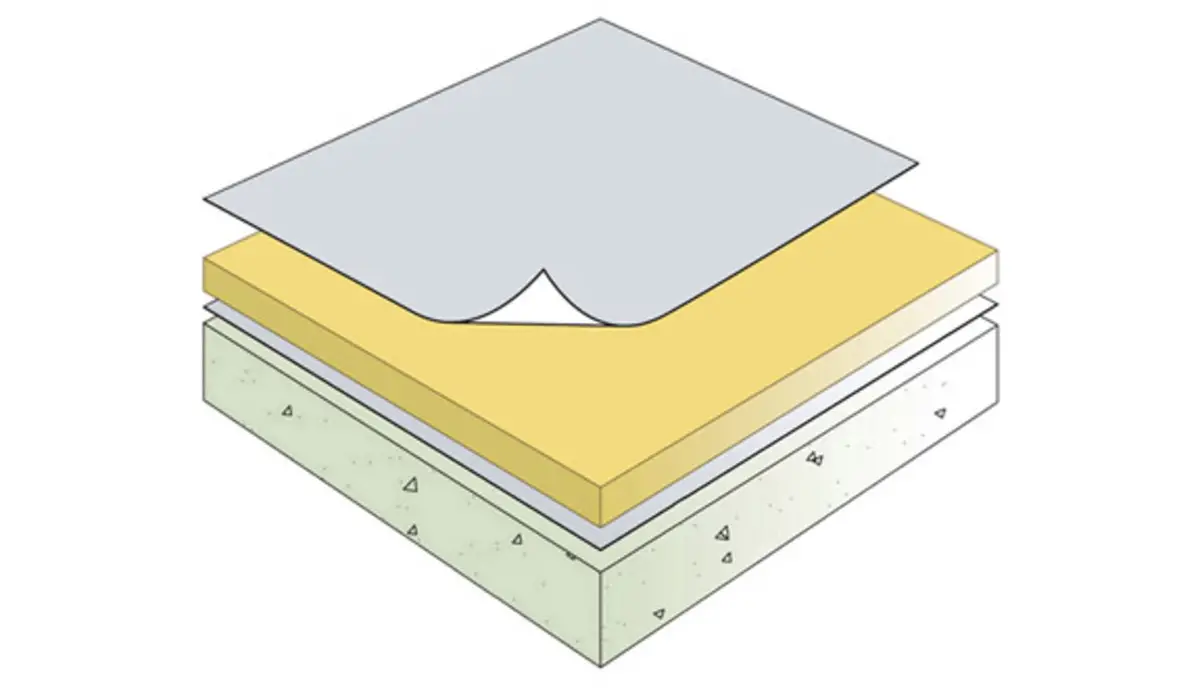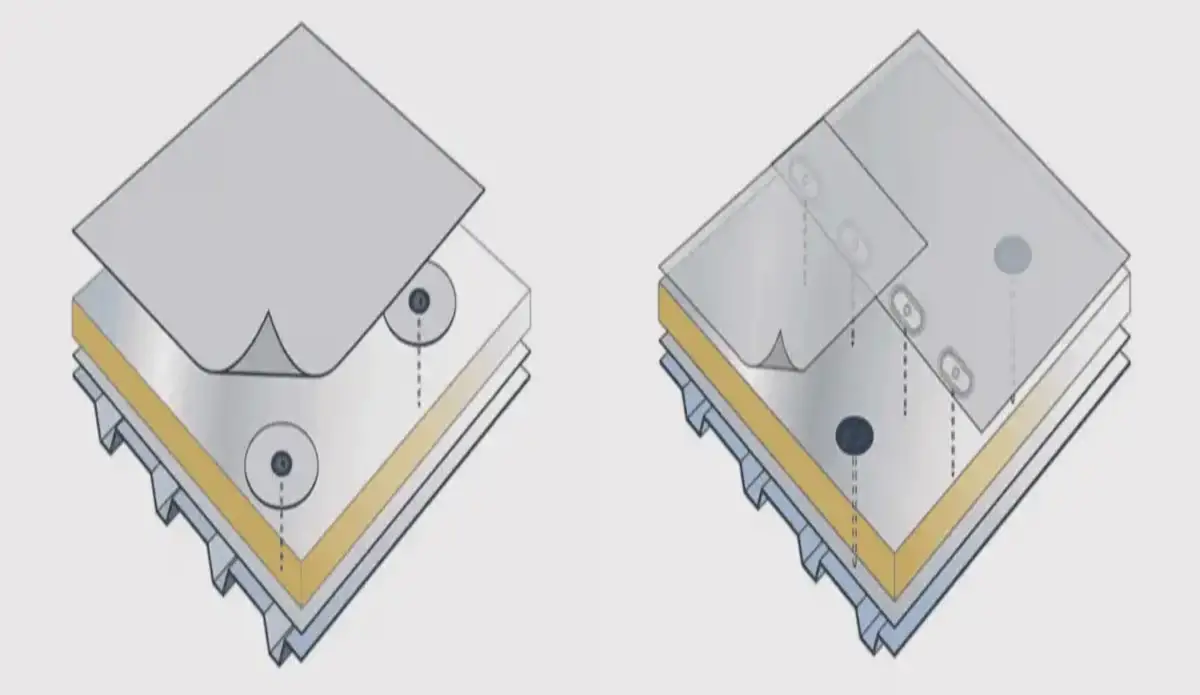
“Fully adhered” (fixed with adhesives) and “mechanically fixed” (fixed with screws) are two different methods of installing roofing materials and each has its own set of advantages and disadvantages.
The choice between the two depends on various factors, including the type of roofing material, climate, budget, and building structure.
We explore the distinct advantages of each roofing method to help you decide what’s the best option:
Advantages of a Fully Adhered Roof

–Wind Resistance: Fully adhered roofs are generally more wind-resistant than mechanically fixed roofs because the roofing material is securely glued or adhered to the substrate, reducing the risk of wind uplift.
–Watertight Seal: The adhesive used in fully adhered roofing systems can create a continuous seal under the membrane, minimising the risk of water travelling through the roof from leaks and any water infiltration.
–Aesthetics: Fully adhered roofs often have a smoother and more aesthetically pleasing appearance because there are no visible fasteners or penetrations on the surface.
–Noise Reduction: The adhesive layer can help dampen sound, making fully adhered roofs quieter during heavy rain or hail while also preventing and flapping of the membranes in windy conditions.
–Enhanced Insulation: Fully adhered roofing systems can provide better insulation properties due to the absence of fasteners that could create thermal bridges.
–Durability: The adhesive bond helps distribute the weight and stress evenly across the roofing material, potentially extending the roof’s lifespan.
–Low Maintenance: Fully adhered roofs typically require less maintenance over time because there are no exposed fasteners or seams that may degrade.
-Reduced Installation Time: The installation process for fully adhered roofs is typically, but not always, quicker than mechanically fixed systems. This is especially true on concrete roof decks where mechanically fixing a roof membrane and insulation involves pre-drilling thousands of holes.
Advantages of a Mechanically Fixed Roof

-Cost-Effective: Mechanically fixed roofing systems are often more cost-effective to install because they require fewer materials and less labour than fully adhered systems.
–Easier Repairs: If a portion of the roof is damaged, it can be easier and more cost-effective to repair or replace individual sections in a mechanically fixed system.
–Flexibility: Mechanically fixed roofs are more adaptable to a variety of substrates and can accommodate changes in building structure or expansion more easily.
-Reduced Installation Time: The installation process for mechanically fixed roofs is typically, but not always, quicker than fully adhered systems, which can help reduce labour costs.
Ventilation: Mechanically fixed roofs can allow for better ventilation under the roof membrane, which can be important in some climates to prevent moisture buildup.
Conclusion
Ultimately, the choice between a fully adhered roof and a mechanically fixed roof depends on the specific needs and priorities of the project.
Factors such as climate, budget, building structure, and roofing material will all play a significant role in the decision-making process.
Take Your Project to New Heights with Tecron
For more in-depth roofing consultants, Tecron’s Technical Team can aid in the design and delivery of the optimum roofing solutions for your upcoming roofing project. Contact us at sales@tecron.ie, by phone on +353-91-353545 or follow us on LinkedIn.
